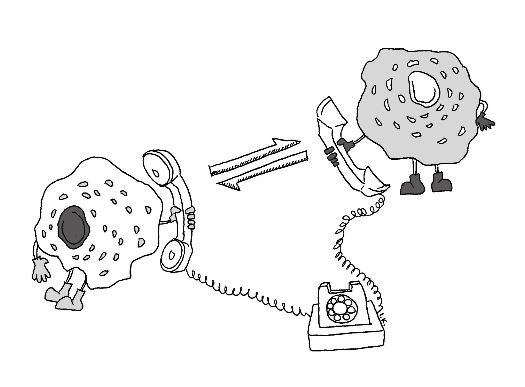
Irene Kim
A new study based on a cross-continent collaboration between researchers at Yale and the Weizmann Institute of Science in Israel demonstrates how different cell types communicate with each other.
Researchers at the two institutions have shown that two different cell types common to most human tissues — macrophages and fibroblasts — “talk” to each other through small signaling molecules known as growth factors. Although scientists have conducted decades of research on signaling within one cell type, not much was previously known about communication between different cell types. The study was published in the journal Cell on Feb. 8.
“The motivation was specifically to understand how cells assemble within tissues to maintain the right cell composition, cell ratio and cell numbers,” said Ruslan Medzhitov, professor of immunobiology at the Yale School of Medicine and the study’s senior author. “This is a problem that has a very general interest because there is no centralized control over these types of cell behavior.”
In other words, the primary way that cells know where to go in the body is through the action of other cells. To investigate this system of regulation, the experimenters looked at a cell circuit consisting of macrophages, a type of white blood cell, and fibroblasts, a type of cell that helps build connective tissue.
“We took a reductionist approach with the two cell types to see how they communicate,” said Ruth Franklin, one of the study’s lead authors and a postdoctoral fellow at Yale.
The experimenters took advantage of two helpful properties of the cells: Macrophages produce growth factors for fibroblasts, and fibroblasts produce growth factors for macrophages. In an uncontrolled environment, this positive feedback should theoretically cause the two populations to grow exponentially.
“If the cells make growth factors for each other, it is unstable because it will be runaway growth,” said Medzhitov.
To the researchers’ surprise, however, when they mixed varying ratios of macrophages and fibroblast populations, the cell populations always converged to a stable ratio. It appeared as if the cells regulated one another and prevented the “runaway growth” that was initially expected. Additionally, the cells were able to support each other’s coexistence without external help.
Intrigued by these results, the teams performed several more experiments, and by drawing on principles from ecology, such as carrying capacity, they discovered specific requirements for the stability of a cellular circuit.
“There are only two very simple rules, which are generally applicable to other cell circuit types,” Medzhitov said. “The first is that one of the cells must be limited by external factors. The second is that the other cell, which is not restricted, has to be constrained by negative feedback from the first cell.”
Franklin called this the spring-and-ceiling model: One cell type is limited by the environment, or “ceiling,” and the other cell is tethered to the first like a spring, regulated by negative feedback.
This elegant model was the product of a highly coordinated study between the Yale researchers and those in Uri Alon’s lab at the Weizmann Institute of Science. The collaboration began three years ago when Medzhitov reached out to Alon to discuss how cells exchanged growth factors, a conversation that ultimately led to this study.
“Uri Alon’s lab is expert in math analysis,” Medzhitov said. “We had a perfect collaboration where they performed very complicated mathematical modeling for different kinds of circuits to look for useful properties while we performed the experimental work.”
Alon’s lab investigated all the possible ways that the two cell types could interact with each other, finding 144 possible circuits. They analyzed these circuits mathematically and narrowed the list to 24 stable circuits, which Yale researchers could then test empirically, according to Medhitov.
“Collaborating with the Medzhitov Lab was so pleasant, inspiring and successful that it was quite easy to overcome the challenges in communicating remotely,” said Alon and Miri Lavi, one of the study’s lead authors and a postdoctoral candidate at the Weizmann Institute, in a joint email to the News.
This discovery provides an exciting opportunity to further explore cellular communication. The labs may continue their research by looking at vulnerabilities in cell circuits that lead to cellular disregulation. All of the researchers interviewed noted that cell communication may play a role in fibrotic diseases and certain types of cancer.
“There are a lot of different directions to go,” Franklin said. “One major path is to see how disease states or inflammatory states affect the stability of the system: What happens to the ratio, is one cell type increased, how does it all relate.”
According to the Cystic Fibrosis Foundation, the disease affects more than 70,000 people worldwide.
